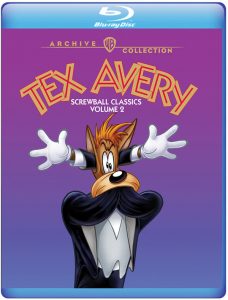 (Tex Avery’s Voice Stock Company revisited)
(Tex Avery’s Voice Stock Company revisited)
Cartoon connoisseurs are finally rejoicing in the year 2020 again after enduring months of pandemic gloom, because Warner Archive is releasing the second Blu-ray set of Tex Avery’s magnificent MGM animation classics.
This time the collection focuses on his later period, from the late 40s and into the 1950s. By now his timing is exactly where he wants it, and the comedy is frantic and endlessly quirky. Simply put, Tex was a one-off, and his body of work is totally original, unable to be duplicated by either imitators or those seeking to pay stylistic tribute. The new disc features some of his most-loved cartoons.
Once again, I felt it was important to enumerate the various uncredited voice artists heard in this latest set, because Avery’s films – while seemingly all about visual gags – were always designed by Tex with slavish attention to the comic aspects of sound, including effects, music and voices.
LITTLE RURAL RIDING HOOD (released September 17, 1949)
This collection begins with one of Avery’s accepted classics, and a perennial favorite. It’s a revisit to his immortal early Red Hot Riding Hood characters of the ever-tumescent wolf and sexy Red. But this time with that always unexpected Avery twist. A double set of Wolf and Red, one pair hailing from the unsophisticated country sticks and the other pair from the hippest part of Manhattan cafe society.
THE CUCKOO CLOCK (released June 10, 1950)
Daws Butler was back to do the cat’s voice, sombrely narrating this atmospheric cartoon full of cuckoo clock comedy. The gag when the cat’s hand gets violently flattened uses MGM sound-library stock of fellow director Bill Hanna’s loud yell, one of a raft of vocal noises he recorded for his own Tom & Jerry soundtracks.
THE MAGICAL MAESTRO (released February 9, 1952)
Many cartoon studios had taken a stab at mocking the world of grand opera, including classics like Lantz’s The Barber of Seville with Woody Woodpecker. But no cartoon ever made a more creatively funny sendup of the rarefied classical music field than this Avery masterpiece. Daws Butler is the voice of mischievous Misto the Magician who is spurned for a job on the theatre bill in favor of the grand bulldog baritone Poochini. He gets his revenge by casting a spell on the singer who undergoes a series of visual and vocal transformations which dash his image of a serious artist. MGM contract singer Carlos Ramirez, a Latin American opera star of 1940s musicals, recorded a vibrant track of Rossini’s Largo al Factotum, and Avery’s stroke of genius was to use the then-popular Las Vegas lounge act The Mary Kaye trio to record some of their act to represent the various changes in Poochini’s magically-ruined vocal. The trio featured Mary and Norman Kaye, and comedian Frank Ross. After their song was edited to Avery’s pinpoint specifications it was mostly Ross’s comic voices that remained. In order, we see the poor bulldog morph into Carmen Miranda (done by Mary Kaye), a Chinese, a Cowboy singer, a square-dance caller, a little brat singing “A-Tisket a-Tasket” (all by Frank Ross) and two chanting Hawaiians (done by Ross and Norman Kaye).
Mixed into this was an imitation of the high and low voiced members of the Ink Spots vocal group, with Paul Frees doing the quavery tenor (“Everything I Have is Yours”) while the deep basso has the old froggy voice of what seems to be Danny Webb, who had done the Wicked Queen for Clampett’s Coal Black at Warner in 1941, and who then served in the war after which he moved to New York. (Could it be he was visiting LA when this cartoon’s track was being made? Or is it another talent who could do that exact bullfrog voice…until more MGM paperwork shows up we can only surmise.)
Final notes: Avery himself contributes the emphatic “No!!!!” as the magician is ejected from the theatre. The orchestra leader would appear to be a caricature of the MGM cartoons’ musical director Scott Bradley. And note the now technology-dated “hair in the gate” projector gag… Avery had done this exact joke eleven years earlier at Schlesinger in his spot-gag travelogue Aviation Vacation as an Irish tenor warbles, and it was rather laboured in execution. But by the time of this MGM cartoon, his precision timing was much more well-honed. This cartoon took a long time… the Mary Kaye trio vocals were recorded on 29 September 1949, some two and a half years before the film was released. A wonderful cartoon.
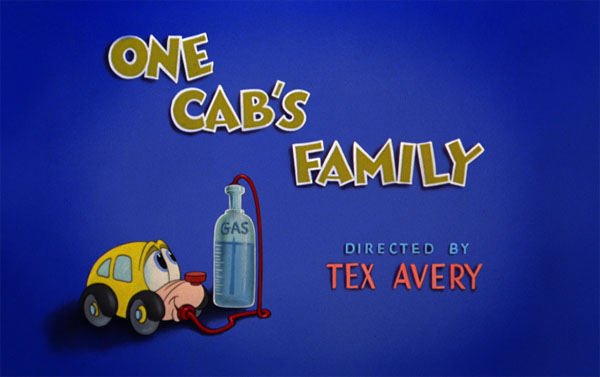
ONE CAB’S FAMILY (released May 17, 1952)
The story was by Avery’s long-time collaborator Rich Hogan, working with Disney’s Roy Williams. It has elements of a vintage Warner cartoon from 1937, Streamlined Greta Green, which was also about a pint-sized child-car. In this cartoon, we hear the team of June Foray and Daws Butler in the early days of their voice careers. This great duo were two of the voice immortals of animation history, and they would go on to perform in many Freberg comedy records and radio shows, as well as spending 25 years with Jay Ward Productions. Here Daws is the Father Cab and the Doctor, June is the Receptionist, the Nurse and Mother Cab, and Tex fills in as the second doctor.
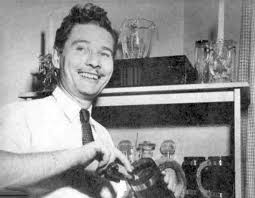
Pat McGeehan
Another Avery classic with endless gags about crazy moon-dwelling creatures. The lead cat is radio voice man Pat McGeehan doing a flustered Durante type delivery. (Was Jimmy Durante the most imitated celebrity voice ever?). The giggling from a pair of animated lips is an old loop of Pinto Colvig, sped up and filed in MGM’s sound library. The woman who yells “What’s going on in there?” is Colleen Collins.
DOGGONE TIRED (released July 30, 1949)
One of Avery’s frequent hunting pictures, and we hear Pat McGeehan once again as the oblivious owner of poor, sleepless mutt Speedy. McGeehan gives a fine energetic reading to his lines, while the Brooklynese female telephone voice is long-time Avery favorite Sara Berner, here sped up for effect. Tex himself supplies Speedy’s canine sounds.
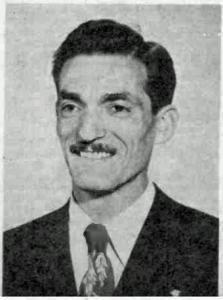
Gil Warren
From late in Avery’s MGM tenure, this entry about a group of fleas who defect from performing to living on a dog has a complex track. Radio veteran Bill Thompson does his familiar Droopy voice for the role of Francois the Clown, and Shep Menken doubles as Pepito and the Pianist flea. A child actress with a genuine French accent was the voice for Fifi LeFlea. Her name was Francois Brun-Cottan and she had first done a cartoon two years earlier playing a charming little mouse in the Tom & Jerry Oscar-winner The Two Mousketeers. By the time she did this cartoon MGM had renamed her Marie Francois, but like many children, once she hit puberty she drifted out of show biz. The song “Applause” by Ira Gershwin & Burton Lane, heard throughout, was re-used from the track of a 1953 musical feature, Give a Girl a Break.
FIELD AND SCREAM (released April 30, 1955)
The last of the various spot gag cartoons in Avery’s theatrical career, this was a tribute to his lifelong pursuits of hunting and fishing, and the title was a take-off of the famous magazine Field and Stream. The wry narration is unconfirmed but sounds much like Avery’s oft-used Gil Warren, who he had known since his days at Warner from KFWB radio. The other lines are spoken by Tex, for the character Ed and “Hey, Mac.”
THE FIRST BAD MAN (released September 30, 1955)
Here was an oddity, a combination of Western and caveman jokes, the third last MGM theatrical Avery directed. This would appear to be the only cartoon by Tex ever to carry an on-screen voice credit. It was for the narrator Tex Ritter, a famous country & western actor-singer and father of TV sitcom star John Ritter. The two Tex’s grew up near Austin, Texas, and Ritter was riding high at this point for his well-known vocal of “Do Not Forsake Me” from the track of western classic High Noon. Aside from Ritter’s smooth narration, we hear June Foray as a nagging Cave-wife, and Avery speaking for a Caveman. (It may be that some of the caveman gags here stayed in Joe Barbera’s head for a few years before the advent of The Flintstones.)
OUT-FOXED (released November 5, 1949)
A second Avery cartoon for Daws Butler who does a subtle impression of distinguished British star Ronald Colman as the refined, tea-drinking and monocled Fox. Bill Thompson is back as Droopy (in his previous appearance, Wags to Riches, Tex’s sad Basset hound had been played by Don Messick in Thompson’s absence). I can’t tell if the Kennel Master is actually Daws doubling in another subtle voice change, or another actor, but it’s Tex himself doing the “dogspeak.” And it sure sounds like everyone on Avery’s staff joins in at the end to warble Auld Lang Syne.
DROOPY’S DOUBLE TROUBLE (released November 17, 1951)
The great “mistaken for a twin” farce staple is the source of gags galore in this cartoon, featuring the accomplished cartoon voice specialists Bill Thompson and Daws Butler. Thompson triples as Droopy, twin Drippy and Spike the flummoxed bulldog, while Daws not only does the butler’s lines but doubles for one of Spike’s Irish-accented lines (“Ah, that’s great, pal!”), obviously when Thompson was unavailable for pickup lines, a common occurrence in animation dialogue recording.
THE THREE LITTLE PUPS (released December 26, 1953)
This cartoon – parodying Three Little Pigs – features a raft of funny dogcatching jokes, heightened by Daws Butler’s Carolina inflected dogcatcher character. This was Daws’s unveiling of what would become his most famous accent, used with subtle gradations for Hanna-Barbera’s TV star Huckleberry Hound and various characters for Walter Lantz and others. Aside from the dog catcher, Daws does some narration, while Bill Thompson is back again as Droopy. And the relaxed whistling of Jubilo was done by musician Joe Trescari.
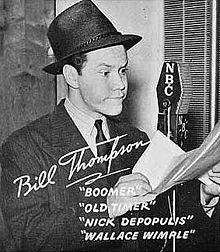
Bill Thompson
A fine Droopy cowboy take-off by Western specialist story man Heck Allen, a long time Avery associate. Bill Thompson does the Droopy voice again, while Tex Avery does the bull moo’s and the voice of the accident-prone Wolf.
HOMESTEADER DROOPY (released July 10, 1954)
A follow-up Western, a movie genre enjoyed by Avery and Heck Allen and always ripe for parody, this one features a florid narration by actor Paul Frees. Bill Thompson doubles as both Droopy and the baby version of Droopy (sped up from his Pa’s voice), with Colleen Collins as Mrs. Droopy. Tex himself plays villain Dishonest Dan, a voice he owned up to doing when he addressed an audience in 1974 at Chapman University. He even did it live for the crowd, recreating “It’s the laaaaaaaawww of the west.” And he adds Dan’s truly dopey laugh at the end.
DIXIELAND DROOPY (released December 4, 1954)
Some fine Dixieland music can be heard in this rags to riches story. Bill Thompson does his Droopy voice for the character of musician John Pettybone, while radio comic specialist John Brown (heard as all three voices in Volume 1’s Symphony in Slang) does three more voices here: the Narrator, the Flea bandleader and the Agent, although when we hear “Come back with my fleas!!” it’s Avery’s voice.
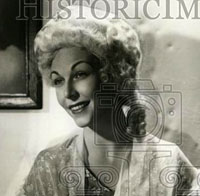
Colleen Collins
Another Avery winner with this funny cat-dog-canary scenario. Avery rehired actress Colleen Collins to do the woman’s voice. Tex himself did some of Spike’s phony meows and, if I’m not mistaken, Bill Thompson is doing some of the bow wows. (These non-dialogue sounds are hard to identify with certainty.) The canary is reused track of 1930s bird whistling specialist Marion Darlington who recorded trills and whistles back in the Happy Harmonies era at Metro.
VENTRILOQUIST CAT (released May 27, 1950)
Spike the bulldog is once more tricked by a cat who learns the art of voice-throwing in another series of fine gags. To do the cute little cat sounds Avery hired nightclub MC and trick voice mimic Merle Coffman, best known by his billing as Red Coffey. He had already been heard in the Tom & Jerry cartoon Little Quacker, doing the querulous duckling voice he would be asked to reprise several times. Avery himself handled the panting and phony meows at the end.
THE HOUSE OF TOMORROW (July 30, 1949)
The first of Avery’s “Tomorrow” foursome with gags based on the things to come premise was the final cartoon that Frank Graham did for Tex (although his last MGM cartoon was Hanna-Barbera’s Jerry and the Lion released in 1950 just months before he took his own life). Graham’s slightly sepulchral tones always provided great narration, and here he describes household changes of the future. He was unavailable to record a pickup section of the film, so Don Messick fills in as the Pressure Cooker announcer. Graham also supplies the snarky “Aaaaahhh shutup!!” while a bratty kid voice sounds like a woman sped up. And director Avery adds the burping sounds. One thing that dates some of these 1950s cartoons comedy-wise are the now archaic-seeming references to awful mothers-in-law. Seeming a tad misogynistic today. By the way, is that Joi Lansing we see in live action on a TV screen?
CAR OF TOMORROW (released September 22, 1951)
Avery always remembered reliable voice talents even years after their last meeting. Here he hired Gil Warren from the Warners radio station as the narrator of a series of gags about new-fangled car attachments. Warren had narrated a few of Tex’s Warner cartoons in the 1938-40 seasons, including A Day at the Zoo and Holiday Highlights. June Foray is heard as female characters and Tex adds some hiccups.
T.V. OF TOMORROW (released June 6, 1953)
When Avery wanted a stentorian narrator he began hiring Paul Frees, still mainly a radio actor at this point. Frees got a cartoon break with Hanna-Barbera in Jerry’s Cousin as Jerry’s Bogart-like tough relative Muscles. He was soon appointed the new voice of Barney Bear in Dick Lundy’s unit. Frees narrated this cartoon sending up the sombre 1950s documentary style, and the few fill-in bit parts were added in separate pickup sessions. Daws Butler did a gambler’s voice, while an unknown voice did three more: “this new brew,” “the Las Vegas special,” and “We’re getting a picture now.” They sound like comic actor Bob Hopkins, but alas I have no proof.
THE FARM OF TOMORROW (released September 18, 1954)
The closer on this Blu-ray disc. This was a milder cartoon when compared with Tex’s acknowledged classics, and by now he was occasionally repeating himself, but what a track record of cartoon greatness he could boast. And it’s still nice to hear animation voice legends Paul Frees narrating and June Foray as a chicken. Colleen Collins is doing the female commercial voice, and Tex yells “Mama!!” A final voice mystery seems to be a subdued Billy Bletcher type saying, “Here’s one for you frustrated grocers.”
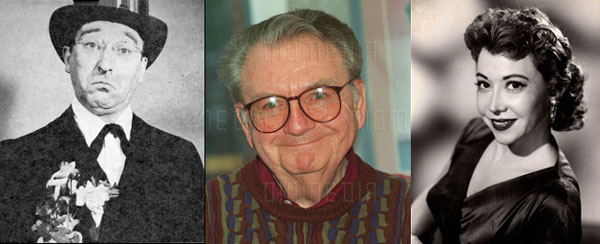
Avery Players: John Brown, Don Messick and June Foray
And that’s it for Volume 2. Fingers crossed we get a follow-up set in 2021, but meanwhile enjoy these twenty-one cartoons from the grand master of animated illogicality and timelessly timed gags, the singular Fred “Tex” Avery.
Acknowledgments
For research assistance over the many years I’m indebted to the following departed folks: Daws Butler June Foray, Paul Frees, Bill Hanna, and my colleague Hames Ware. Others I wish to thank are Ned Comstock (USC Cinema-TV Library), Mike Barrier, Mark Kausler, Milt Gray, Ken Greenwald and Ron Wolf at the old PPB, Francois Cottan, and Don M. Yowp for various helpful clippings. And as ever Jerry Beck for Cartoon Research.
For my voice over-view of the first Avery blu ray collection (Vol. 1) click here.
Copyright © KEITH SCOTT, November 2020


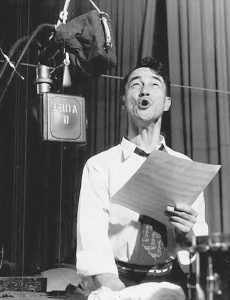
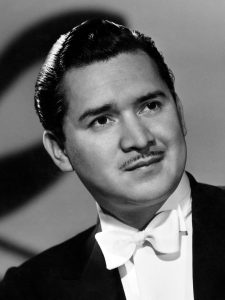
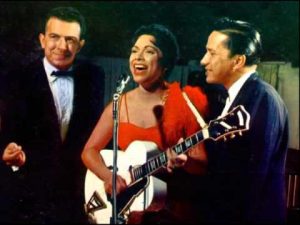
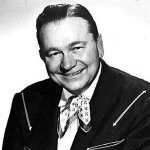
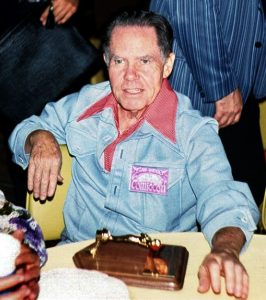
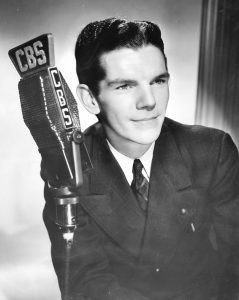

 Keith Scott is a voice actor, impressionist and animation historian. Scott provided the voice for Bullwinkle J. Moose in the 2000 motion picture The Adventures of Rocky and Bullwinkle (for which he had been specially flown to the United States several times) and did the voice of the narrator in George of the Jungle and George of the Jungle 2. An expert on the history of Jay Ward Productions, Keith authored the book The Moose That Roared: The Story of Jay Ward, Bill Scott, a Flying Squirrel, and a Talking Moose (St. Martin’s Press, 2000).
Keith Scott is a voice actor, impressionist and animation historian. Scott provided the voice for Bullwinkle J. Moose in the 2000 motion picture The Adventures of Rocky and Bullwinkle (for which he had been specially flown to the United States several times) and did the voice of the narrator in George of the Jungle and George of the Jungle 2. An expert on the history of Jay Ward Productions, Keith authored the book The Moose That Roared: The Story of Jay Ward, Bill Scott, a Flying Squirrel, and a Talking Moose (St. Martin’s Press, 2000).




























































It’s tough to say about Webb. Going through the New York papers, he seems to have consistently worked at WPIX from at least the start of 1949 (“Comics on Parade, “Six Gun Playhouse”) to the end of 1951 (when he disappears). He also made an industrial film for Motion Picture Stages Inc. in New York in mid-1950. Still, it’s possible he could have visited the West Coast.
I had no idea Shep Menken worked at MGM.
Colleen Collins did a wicked Mary Livingstone. I wish I could find the radio show where she did it.
I hadn’t been able to figure out the narrator on “Field and Scream.”
Thanks for all this, Keith.
The blackface gag in “The Magical Maestro” does indeed mimic the “top and bottom” format used by the Ink Spots in their ballads, where the first verse is sung by the tenor and followed with one spoken by the bass. However, as far as I know the Ink Spots never recorded “Everything I Have Is Yours”. It was a hit for Billy Eckstine in 1948, who sang it at a very slow tempo with a wide, syrupy vibrato, just as parodied in the cartoon. Perhaps Avery or his gag men confused Billy Eckstine with Bill Kenny of the Ink Spots. “Everything I Have Is Yours” is a favourite song of mine, and while Eckstine was a great singer, I much prefer the earlier recordings by Rudy Vallee and Gene Austin.
It’s probably only a coincidence that MGM released the film musical “Everything I Have Is Yours” later in 1952. The title song was sung by Monica Lewis, whose most successful recording was the famous Chiquita Banana ad jingle.
This is excellent research. I know I’ll be consulting this page again and again whenever I watch these cartoons.
I very much look forward to this disk and, yes, I do wish hard for a third volume which will possibly take care of what is left…and, boy, just think of what is left!! Regarding the “snarling” voice heard as narrator on the squeezing gag in “FARM OF TOMORROW”, I would assume that it is the same voice over talent that acted as alternate narrator for “TV OF TOMORROW”. One would have to take those two tracks and play ’em side by side to prove me right or wrong, but that is my thought on the matter.
Tex Ritter is also well known to Disney fans as the narrator of various live-action films and TV episodes of “Walt Disney Presents” centering around wildlife, like “Charlie the Wayward Coyote” and “Run, Cougar, Run!” It was these type of films that were being parodied in “Animaniacs” when Charlton “Baynarts” Woodchuck tried to break into movies.
The opening shot in “The Cat Who Hated People,” of the cat sitting in a box saying, “People are no darn good,” appears to be a swipe of a “New Yorker” cartoon by Saul Steinberg, of a man sitting in box saying “People are no damn good.”
The reason Don Messick’s voice was used on part of House of Tomorrow was that MGM needed to change the date that was mentioned in the script for later reissues of the cartoon. It was originally 1975, as mentioned in Joe Adamson’s Tex Avery book. Since Graham had died, Messick re-recorded it to the year 2050; now someone else is going to need to change it to 2300 or something like that.
Russell H: The “People Are No Damn Good” cartoon was by William Steig, not Saul Steinberg. It didn’t run in the New Yorker, but it was merchandised widely.
Thanks to all for the nice feedback. If any new info is found on some of the obscurities I am more than happy to add corrections with acknowledgments.
The reply function doesn’t seem to work at the moment, so I will add replies here:
Dave Mackey, I had no idea about the Messick line being added a few years later…or I was asleep at the wheel!! I’d love to see an original 1949 print of The House of Tomorrow to check what the original sounded like.
Paul Groh, Paul Frees did a nice send up of mellow baritone Billy Eckstine on the 1952 Spike Jones record of Deep Purple. )
Mark Evanier wrote about that cartoon almost 20 years ago, and who do you think solved that mystery? https://www.newsfromme.com/2001/10/06/the-messick-mystery/
Hey Keith I know you don’t want to set any thing in stone but what cartoons do you think daws butler did for screen gems
Reply function still not working….
DAVE MACKEY: Many thanks for the info and the Mark Evanier link. But the mystery now deepens further. I looked up one of my old references, the AFTRA GUIDE (an industry casting directory for radio talent) and Don Messick’s entry lists Radio, Discs (meaning Records), Screen and Video (meaning TV) credits. For Screen it says: “MGM Cartoons – House of Tomorrow and Droopy Series.” However, this was the 1954 edition, meaning he had already recorded the track sometime in the previous 12 months, 1953-54 only four years after the original cartoon was released. It wasn’t reissued until 1956, so some studio department must have already existed to keep an eagle eye on any possible needs to re-dub films for topicality. And they seemed to get the job done far in advance of the reissue date.
JOE: The only Screen Gems Daws did was a bit for SHORT SNORTS ON SPORTS, likey recorded in 1947 and released in mid-1948, and that cartoon is not currently available to see. He also did a role in the fourth Columbia cartoon released by UPA, PUNCHY DeLEON, released early 1950.
Tony Ginorio:
The narrator of the Disney titles mentioned (as well as many others) was not Tex Ritter.
It was Rex Allen.
I’m curious, is there any proof as to whether or not Avery ever did the voice of Droopy? Is it possible that he was the voice when Thompson was in the Navy?
Three generations of Ritters in cartoons: “The FIrst Bad Man,” “Clifford the Big Red Dog,” “Gravity Falls.”
John Brown narrated the “Las Vegas Special” sequence in “TV of Tomorrow”. I believe Tex used him as a favor, as Brown had very few opportunities for radio, TV and movie roles, due to his being blacklisted in 1952. Indeed, the only steady work he had outside of Tex’s cartoons in 1953 was his role as “Thorny” on the radio version of “THE ADVENTURES OF OZZIE & HARRIET” {Ozzie Nelson refused to knuckle under to network and ad agency excecutives who insisted he couldn’t use Brown}, and his voices as “Ro-Man” and his superior in “Robot Monster”.